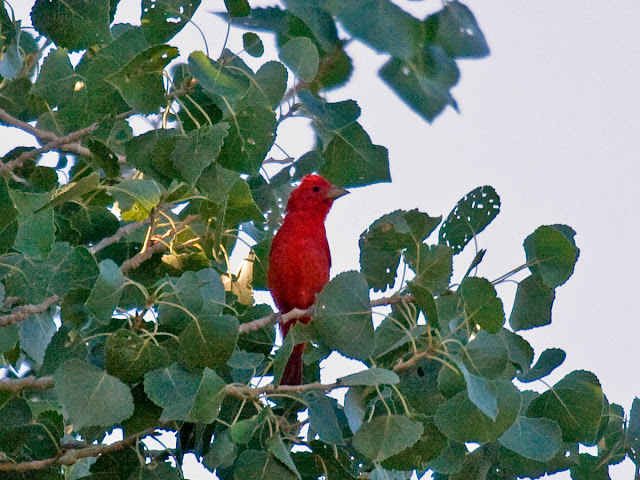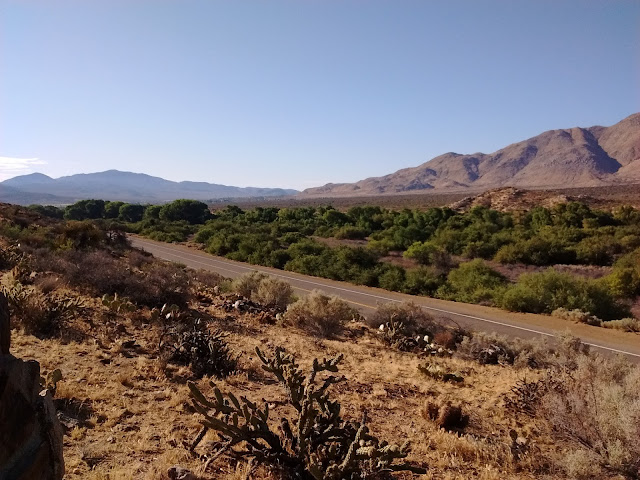 |
| Summer Tanager in cottonwoods. San Felipe Rd, San Diego Co., California. July 5, 2015. Greg Gillson. |
Scissors Crossing is a long ways from anywhere--especially when you want to arrive at sunrise, or before. It is 70 miles from San Diego, 50 miles from Escondido, on winding mountain roads, for the most part.
The exact birding location is north 1/2 mile on San Felipe Road [S2] from the intersection of CA-78. If you type it into your map app on your mobile phone it is: 21456 San Felipe Rd, Julian, California 92036. Really, though, it is 12.6 miles east of Julian, and takes about 22 minutes down the winding mountain road of CA-78 from Julian (at 4000 feet elevation). There aren't any public facilities nearby--no gas, food, drinks, restrooms. The only nearby homes are south back across highway CA-78 on S2 about 2 miles to the small unincorporated community of Shelter Valley (which does have a fire department and community center). It is 20 miles to Borrego Springs, on flatter roads and highway speeds.
 |
| Looking south across San Felipe Creek. |
 |
| Looking southeast along San Felipe Road. The tall cottonwoods on the left are where you bird the (dry) creek. |
There were about a dozen Ash-throated Flycatchers flying around the area, both in the desert scrub and in the cottonwoods and mesquite trees in the dry creek bed. On both days, about two hours after sunrise, a group of 3 or 4 Brown-crested Flycatchers started making racket high in the cottonwoods. Their calls were louder, liquid, and less harsh, but similar. And visually, they were almost identical, the Brown-crested with a slightly larger bill, yellower belly, and a hard-to-see slightly different pattern to the rust on the tip of the tail (rust reaching all the way to the end). Brown-crested Flycatchers are rare breeders here and at Borrego Springs, starting in 2000.
 |
| Brown-crested Flycatcher in mesquite. San Felipe Rd, San Diego Co., California. July 4, 2015. Greg Gillson. |
 |
| Birding at Scissors Crossing. Park where indicated. |
My eBird list for July 5th.
When should you look?
Summer Tanager: May through August
Brown-crested Flycatcher: late May into August







